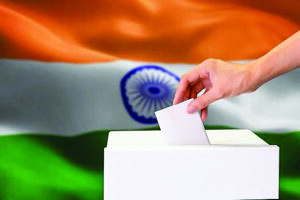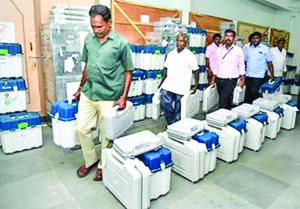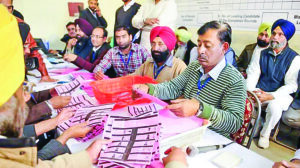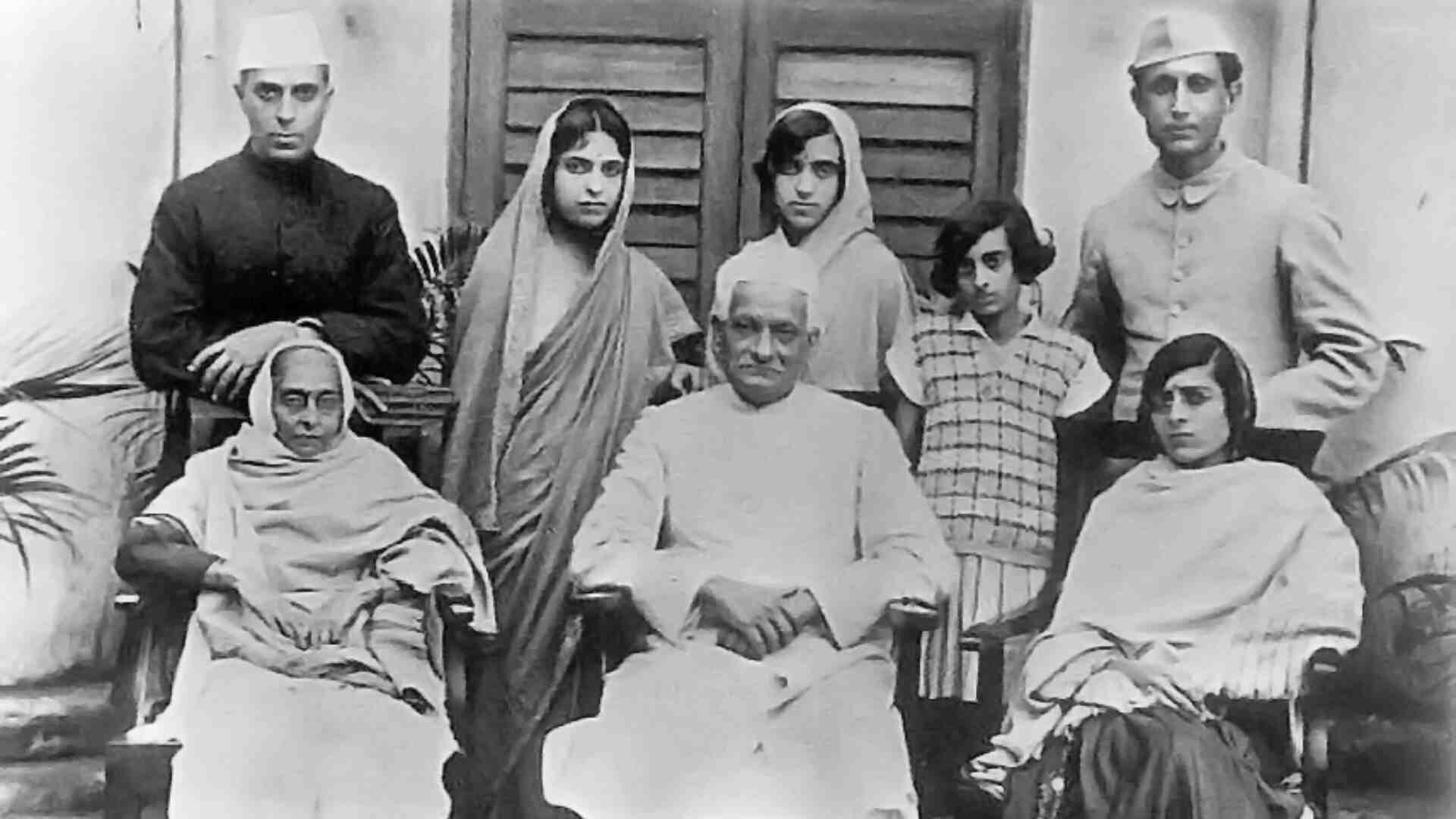Vote counting is tedious if elections are conducted through ballot papers. Trials of EVMs were first held in 1982 in Kerala and later rolled out in 25 states in 1998. In 2004 general elections, EVMs were launched pan-India. With EVMs, counting is smooth and seamless. With the Supreme Court ruling in favour of EVMs, all controversies over it are put to rest.
The method of counting votes in Indian Lok Sabha elections has evolved over time. Initially, manual counting of paper ballots was the norm. Ballot papers were collected from polling stations and then counted manually at counting centers under the supervision of election officials and political party agents. This process was labor-intensive and time-consuming, often taking several hours or even days to complete.
In an effort to streamline the electoral process and address concerns regarding accuracy and efficiency, India began introducing Electronic Voting Machines (EVMs) in the 1990s. EVMs are standalone electronic devices that allow voters to cast their votes by pressing buttons corresponding to the candidates’ names or symbols. These machines electronically record the votes and store the data securely.

Counting of votes cast through EVMs is typically much faster compared to manual counting of paper ballots. After the voting period ends, the EVMs are sealed and transported to counting centers. The votes stored in the EVMs are then tabulated electronically, with results usually available within a few hours after the conclusion of polling.
The introduction of EVMs has brought several advantages, including faster and more accurate tabulation of votes, reduced chances of errors or tampering, and enhanced transparency in the electoral process. However, concerns have been raised regarding the security and integrity of EVMs, leading to debates and discussions on electoral reforms and the use of technology in elections.
Overall, while manual counting of paper ballots was the traditional method used in Indian elections, the adoption of EVMs has significantly modernized the electoral process and improved efficiency in vote counting.
Here’s a more detailed comparison between ballot paper counting and Electronic Voting Machines (EVMs) in Indian Lok Sabha elections:
Accuracy: EVMs are designed to minimize errors in the vote-counting process. They electronically record each vote, reducing the likelihood of mistakes that can occur during manual counting, such as misreading or miscounting of ballot papers.
Efficiency: EVMs offer a much faster counting process compared to manual counting. With manual counting, the process can be time-consuming and labor-intensive, potentially taking several hours or days to complete, especially in constituencies with a large number of voters. In contrast, EVMs allow for quick tabulation of votes, and results can be declared within hours after the conclusion of polling.
Transparency: Both manual counting and EVM-based counting are conducted in the presence of election officials and representatives from political parties to ensure transparency and fairness. However, EVMs provide an additional layer of transparency as they display the total number of votes cast for each candidate at the end of the polling period, allowing for immediate verification by observers.
Security: EVMs are designed with several security features to prevent tampering or manipulation of votes. They are sealed before polling begins and opened only in the presence of authorized personnel during counting. Additionally, the data stored in EVMs is encrypted and cannot be altered without proper authorization.
Cost: While the initial investment in EVMs may be higher compared to the cost of paper ballots and manual counting equipment, EVMs offer long-term cost savings by reducing the need for paper, printing, storage, and manual labor associated with ballot paper counting.
Accessibility: EVMs are user-friendly and accessible to voters of all ages and abilities. They often include features such as Braille labels and audio instructions to assist visually impaired voters. This helps in promoting inclusivity and ensuring that all eligible voters can participate in the electoral process.
Public Confidence: The use of EVMs has been subject to scrutiny and debate in India, with concerns raised by some political parties and activists regarding the security and integrity of the voting machines. Despite these concerns, EVMs have generally been accepted by the Election Commission of India as a reliable and efficient means of conducting elections.
Storage and Handling: EVMs require less storage space compared to paper ballots and counting equipment. After elections, EVMs can be securely stored in a relatively small space, whereas paper ballots require proper storage facilities to prevent damage or tampering.
Recounts and Audits: In case of disputes or requests for recounts, manual counting of paper ballots can be more feasible as each ballot paper can be individually inspected and recounted. However, with EVMs, recounting is limited to verifying the electronic tally stored in the machines, which some critics argue may not provide the same level of transparency as manual recounts.

Environmental Impact: The use of EVMs reduces the environmental impact associated with paper-based elections, including deforestation, paper waste, and carbon emissions from transportation. EVMs are reusable electronic devices that contribute to the sustainability of the electoral process.
Technological Advancements: EVM technology continues to evolve, with ongoing efforts to enhance security, reliability, and accessibility. New features such as Voter Verifiable Paper Audit Trail (VVPAT) systems have been introduced to provide voters with a physical receipt of their vote, further increasing transparency and confidence in the electoral process.
Legal and Regulatory Framework: The use of EVMs in Indian elections is governed by a comprehensive legal and regulatory framework, including guidelines for manufacturing, testing, and deployment of the machines. The Election Commission of India plays a central role in ensuring compliance with these regulations and addressing any concerns related to EVMs.
Public Awareness and Education: The introduction of EVMs has necessitated public awareness campaigns and voter education initiatives to familiarize voters with the technology and reassure them of its reliability. This includes training poll workers, conducting mock elections, and disseminating information about the voting process and security measures in place.
International Comparisons: India is not the only country to use EVMs in elections. Many other democracies around the world, including Brazil, the Philippines, and several European countries, have adopted electronic voting systems to varying degrees. Studying international experiences can provide insights into best practices and potential challenges associated with EVMs.
In summary, while both manual counting of paper ballots and EVM-based counting have their advantages and challenges, the adoption of EVMs has significantly modernized the electoral process in India, making it more efficient, transparent, and accessible to voters. These points highlight various aspects of the transition from manual ballot paper counting to EVM-based counting in Indian Lok Sabha elections, illustrating the multifaceted nature of electoral modernization efforts.
Today, we delve into the comprehensive details of what an EVM truly is and how it functions in the vote-counting process.
As per the Election Commission’s definition, an EVM refers to voting conducted electronically to either assist or manage the tasks of casting and tallying votes. In simpler terms, EVMs electronically record voters’ choices, thereby reducing human effort in the voting and counting process during elections.
EVMs were introduced as a replacement for traditional paper ballots and were first utilized in the No. 70 Parvur assembly constituency in Kerala in 1982. These machines consist of two units: Control Unit and Balloting Unit.

During voting, the Presiding Officer holds the control unit, while the balloting unit is placed in the compartment for voters to cast their votes. It’s important to note that the Presiding Officer verifies the voter’s identity but does not see the choice of vote. EVMs operate on standard batteries and do not require electricity. Each EVM can record up to 2,000 votes, and if one malfunctions, it is replaced with a new one while ensuring that the votes recorded until that point are safely stored in the control unit’s memory.
While using an EVM, instead of issuing a paper ballot as done traditionally, the polling officer enables voters to cast their votes by pressing a button. A list of candidates’ names and symbols is displayed on the machine, and voters select their preferred candidate by pressing the corresponding button.
The responsibility of conducting elections and counting votes in a constituency lies with the Returning Officer (RO), who is appointed by the Election Commission in consultation with the state government. Counting of votes ideally takes place in one location under the direct supervision of the RO. However, in constituencies with multiple assembly segments, counting may occur at different locations supervised by Assistant Returning Officers (AROs).
The counting process begins with the tallying of Electronically Transmitted Postal Ballots (ETPB) and Postal Ballots (PB) under the RO’s supervision. After a set duration, counting of EVMs commences, with results declared after each round of counting, typically covering votes from 14 EVMs.
In summary, EVMs have revolutionized the electoral process in India, streamlining voting and counting procedures while maintaining transparency and accuracy in elections.























